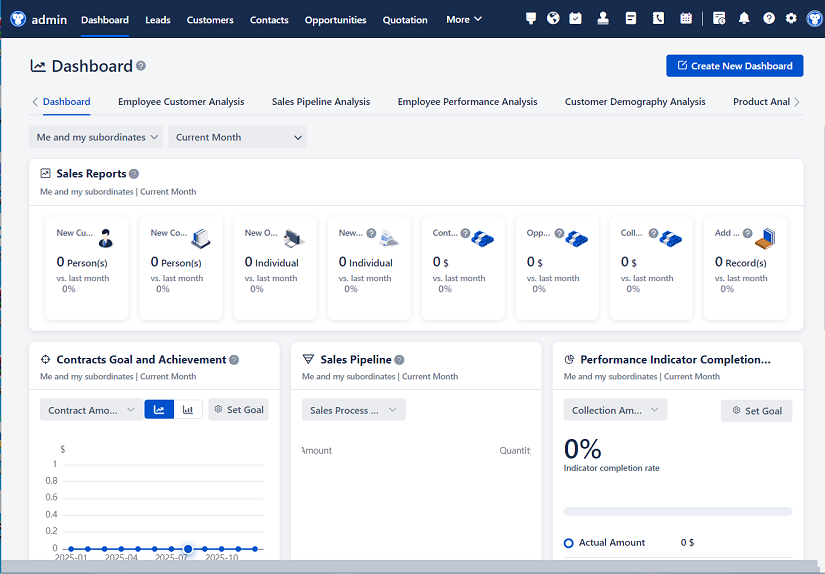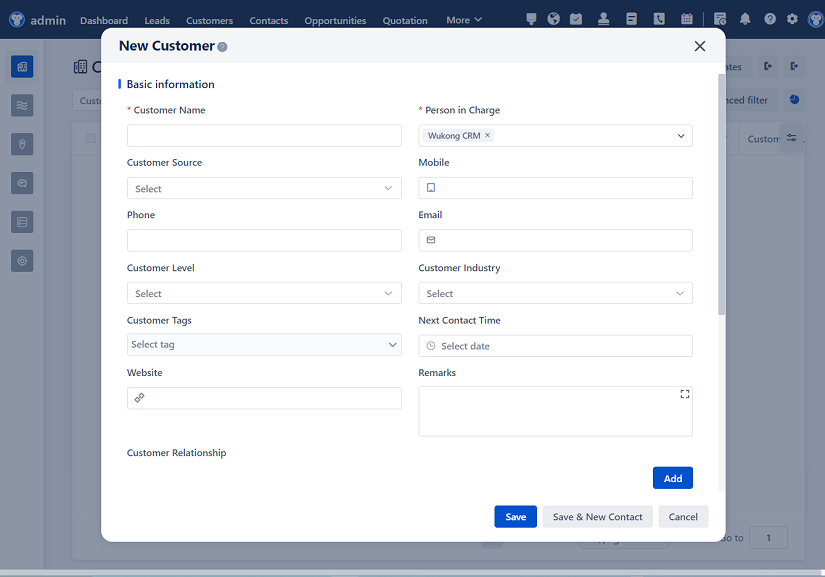
△Click on the top right corner to try Wukong CRM for free
Hey there! So, you're curious about the structural forms of procurement organizations, huh? Well, let's dive right in and see what we can uncover. It's a pretty interesting topic, especially if you're into how businesses organize themselves to get the best deals on the stuff they need.
First off, let’s talk about the centralized procurement structure. Imagine you have a big company with lots of different departments, and one team is in charge of buying everything for everyone. That’s what a centralized procurement organization looks like. It’s kind of like having one person do all the grocery shopping for a large family. This way, you can make sure that everyone is getting the same quality of products, and it’s easier to negotiate better prices because you’re buying in bulk. Plus, it simplifies things a lot, as you don’t have to worry about each department trying to do its own thing. But, of course, it has its downsides too. Sometimes, the central team might not understand the specific needs of each department, which can lead to some frustration. And, let’s be honest, when you have one team handling everything, it can get a bit overwhelming, and things might slip through the cracks.
Now, on the other side of the spectrum, we have the decentralized procurement structure. In this setup, each department or business unit gets to handle its own purchasing. It’s like letting each member of the family go out and buy their own groceries. The good thing about this is that each department can tailor its purchases to its specific needs. They know exactly what they want, and they can get it without having to go through a middleman. This can also speed up the process, as there’s no need to wait for approval from a central team. However, it does come with its own set of challenges. For one, it can be harder to keep track of spending, and you might end up paying more overall because you’re not leveraging the power of bulk buying. Also, it can lead to a lack of consistency in the quality of the products and services you’re getting, which can be a real headache.
But wait, there’s more! There’s also something called the hybrid procurement structure, which, as the name suggests, is a mix of both centralized and decentralized approaches. It’s like having a family where some members do their own grocery shopping, while others rely on a central shopper. In a hybrid model, certain categories of goods or services are managed centrally, while others are left to the individual departments. This can be a great way to get the best of both worlds. You get the efficiency and cost savings of centralized procurement for the big, common items, and the flexibility and responsiveness of decentralized procurement for the more specialized needs. Of course, it’s not without its challenges. Balancing the two approaches can be tricky, and it requires a lot of coordination and clear communication to make sure everyone is on the same page.
Another interesting form is the matrix procurement structure. This one is a bit more complex, but it’s worth understanding. In a matrix structure, you have both functional and project-based teams working together. Think of it like a sports team where you have your regular players (the functional teams) and then you bring in some specialists (the project-based teams) for specific games. In this setup, the functional teams handle the day-to-day procurement activities, while the project-based teams focus on specific projects or initiatives. This can be really effective for companies that have a lot of ongoing projects, as it allows them to be more agile and responsive. But, as you might guess, it can also be a bit confusing, and it requires a lot of collaboration and clear roles to make it work smoothly.

Lastly, let’s talk about the global procurement structure. This is for those big, multinational companies that operate in multiple countries. In a global procurement structure, you have a central team that oversees procurement across all regions, but you also have local teams that handle the specifics. It’s like having a head chef who creates the menu, but then you have local chefs who adapt the recipes to suit the tastes and ingredients available in their area. This approach can help ensure that the company is getting the best deals globally, while still being able to meet the unique needs of each region. But, as you can imagine, coordinating all of this can be quite a challenge, and it requires a lot of communication and cultural sensitivity to pull off successfully.
So, there you have it! The different structural forms of procurement organizations. Each one has its pros and cons, and the right one for a company depends on a lot of factors, like the size of the organization, the nature of its business, and its specific needs. It’s all about finding the right balance between efficiency, flexibility, and control.
Alright, now that we’ve covered the basics, let me throw in a few questions to help you think about this a bit more:
- What are the main advantages and disadvantages of a centralized procurement structure?
- How does a decentralized procurement structure benefit individual departments, and what are the potential drawbacks?
- Can you give an example of a situation where a hybrid procurement structure would be the most effective?
- How does a matrix procurement structure differ from a traditional centralized or decentralized structure, and what are the key benefits and challenges?
- In a global procurement structure, how do you balance the need for global consistency with the need for local flexibility?

I hope these questions get you thinking, and if you have any more, feel free to ask!
Related links:
Free trial of CRM
Understand CRM system
AI CRM Systems

△Click on the top right corner to try Wukong CRM for free